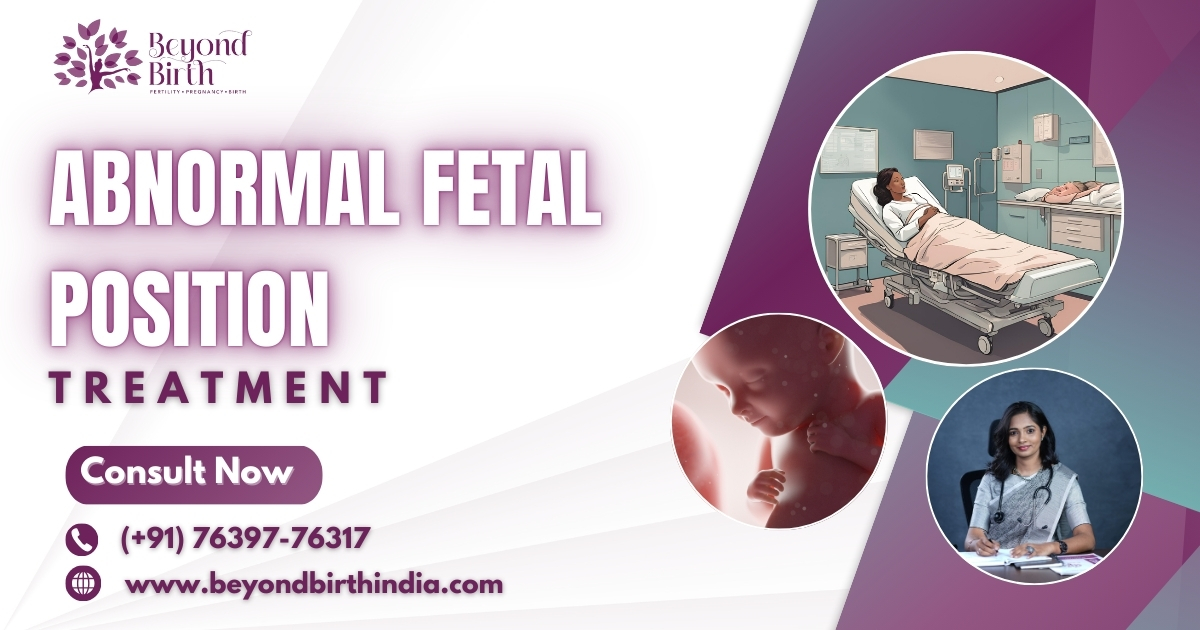Facing the Unexpected: A Parent's Guide to Abnormal Fetal Positions
Pregnancy can be an exciting yet unpredictable journey. As your baby grows, their position in the womb becomes crucial for a smooth delivery. Ideally, babies settle into a head-down position, facing your back. However, some may adopt abnormal positions, which can complicate labor and delivery.
What Are Abnormal Fetal Positions?
Abnormal fetal positions occur when a baby isn’t head-down and facing the back as delivery approaches. Common types include:
Breech Position: The baby’s feet or buttocks come out first.
Occiput Posterior Position: The head is down, but the baby faces the abdomen, often causing back labor.
Transverse Lie: The baby lies sideways, making head-first delivery impossible.
Shoulder Presentation: The shoulder descends into the birth canal instead of the head.
Why Do Abnormal Fetal Positions Happen?
Several factors can contribute to abnormal fetal positions:
Uterine shape or size: Variations in uterine structure can influence positioning.
Amniotic fluid levels: Too much or too little fluid can restrict movement.
Multiple pregnancies: Tight spaces in twins or more can lead to positioning issues.
Maternal health conditions: Issues like uterine fibroids can affect positioning.
Previous pregnancies: A history of abnormal positions can increase the likelihood in subsequent pregnancies.
How Are Abnormal Fetal Positions Diagnosed?
Your healthcare provider will typically assess your baby’s position during prenatal check-ups, using abdominal exams or ultrasounds. If your baby is in an abnormal position, there are still safe delivery options available.
Implications for Delivery
The baby's position can significantly impact labor and delivery. Here’s what to expect:
Breech Position: Many breech babies rotate on their own before labor. If not, your provider may attempt an external cephalic version (ECV) to encourage turning. If that fails, a C-section may be recommended for safety.
Occiput Posterior Position: While labor may take longer and involve more discomfort, vaginal delivery is possible. Positions like hands and knees can help the baby rotate.
Transverse Lie and Shoulder Presentation: These positions typically require a C-section as vaginal delivery is unsafe.
Techniques to Encourage Movement
If your baby is in an abnormal position, try these techniques:
Pelvic Tilts and Exercises: Movements like pelvic tilts or cat-cow stretches can create space for the baby.
Spinning Babies Techniques: This approach focuses on movement and positioning to facilitate optimal positioning.
Chiropractic Care: The Webster technique can help align the pelvis for better baby positioning.
Moxibustion and Acupuncture: These traditional practices may stimulate energy flow to encourage the baby to turn.
When Might a C-Section Be Necessary?
Although many women can deliver vaginally, certain cases (like transverse lie or shoulder presentation) may necessitate a C-section to ensure safety. Your healthcare provider will discuss the best options for you.
Your Journey with Beyond Birth
At Beyond Birth, we recognize that every pregnancy is unique. We are committed to supporting you through all aspects, whether dealing with an abnormal fetal position or navigating a straightforward delivery. Our goal is to empower you with resources and care throughout your journey.
Conclusion
While abnormal fetal positions can pose challenges during labor, they don’t diminish the beauty of your birthing experience. Understanding these positions and their implications can help you feel more prepared. With the right support and techniques, you can navigate this situation with confidence. At Beyond Birth, we are dedicated to empowering you throughout your pregnancy and birthing journey.
Know more : https://beyondbirthindia.com/a....bnormal-fetal-positi
